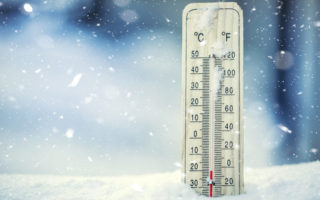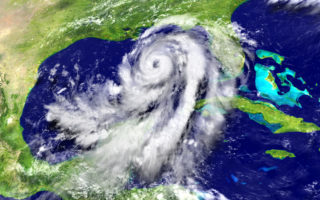Preparing For Art-Related Claims After Hurricane Harvey
By Jamie K. Baker • Sep 20, 2017
This article was featured in the Expert Analysis Section of Insurance Law360, September 20, 2017. You can access the article on Law360 here.
Hurricane Harvey made landfall near Corpus Christi, Texas on Friday, August 25, 2017. Houston—the nation’s fourth largest city—was hit particularly hard by the Category 4 storm. Only a few days later, on September 1, 2017, Texas’ new Insurance Code Section 542A went into effect. Section 542A, entitled “Certain Consumer Actions Related to Claims for Property Damage,” was enacted in response to a significant increase in first party property damage lawsuits involving weather-related events. The provisions of Section 542A apply in first party residential and commercial property claims for damages resulting from natural forces, including earthquake, wildfire, flood, tornado, lightning, hurricane, hail, wind, snowstorm, or rainstorm. The statute’s provisions do not apply to non-weather related property damage claims. Section 542A applies to all insurers, with the exception of the Texas Windstorm Insurance Association (“TWIA”) and the Texas FAIR Plan Association (“TFPA”). The new law also applies to contractual and extra-contractual causes of action and requires that the claimant provide notice of dispute to an insurer 60 days prior to filing suit. The statutory notice must be in writing and apprise the insurer of the acts or omissions giving rise to the claim, the specific amount in dispute, and the amount of attorney’s fees sought based on hours actually worked as of the notice date. Section 542A’s notice provision is in addition to any other notice required by law or applicable insurance policy.
It is quite likely that the Texas Legislature was not contemplating the complexities of adjusting art-related hurricane claims when Section 542A was enacted. While it is common knowledge that insurance is needed to protect against property loss, many may not realize that insuring fine art and the building structures in which artwork is housed involves unique risks and coverage considerations. Insurance for artwork such as paintings, sculpture, and prints is procured by museums, galleries, and collectors. This type of coverage may also be used by anyone interested in protecting the value of other unique property, such as photographs and first-edition books. The art institutions, museums, and storage facilities that house artwork must also be insured.
Hurricane Harvey will undoubtedly generate a significant number of first-party residential and commercial property claims for art-related damages, implicating Section 542A. Claims handling will be a key issue for Harvey art-related losses. Proper claims-handling of Harvey art-related losses will obviously be of critical importance. Insurers offering fine art coverage (as well as coverage for museums and galleries) will need to utilize adjusters with expertise in handling art related losses, particularly in the areas of valuation, conservation and restoration. Additionally, art appraisals evidencing recent market values will be important during the adjustment process. Anyone can Google the replacement value of a broken window pane. The same is not true with regard to the value of a storm damaged Warhol or a one of a kind art facility. Art related claims may be made under homeowners, commercial, and specialty fine art related policies. Some of these claims may implicate Section 542A’s new requirements in the context of a sector of insurance law that is already relatively “unchartered territory.”
Artwork falls into the category of physical property subject to physical damage. When an art loss occurs following a catastrophic weather event such as Hurricane Harvey, numerous coverage questions may arise. For example, if the artwork is in a gallery and both the artist and gallery carry insurance on the damaged piece, which policy provides primary coverage? What is covered under each policy? If the insuring agreement is triggered, which exclusions apply? If consigned work is damaged or destroyed, what will the artist receive? What will the work’s owner and/or the consignment house receive? Insurance companies sometimes utilize what is known as a “blockage rule” for discounting art sold together as a body of work. In general, galleries insure to the value of the consignment price, but an artist may seek full retail value. Disputes may also ensue regarding recoupment of dealer’s commissions in the context of damaged or destroyed artwork for sale. Additionally, the federal Visual Artists’ Rights Act (“VARA”) may come into play. This statute prevents the owners of artworks of recognized stature from destroying or altering them without the artist’s approval. Coverage issues may also arise involving novel questions of artists’ rights to repair weather damaged artwork after an insurer has paid for the piece and taken title and possession of it. It is also conceivable that artists may claim that the work in a weather damaged state is no longer representative, and actually renounce its value and attribution. Because insurance claims often arise in the course of transit, we expect to see situations in which storm damage may be compounded by additional loss while art is transferred from one locale to another for storage or conservation.
South and Southeast Texas, the regions most affected by Hurricane Harvey, are home to a significant number of art and cultural interest institutions. Given the storm’s impact on this region, insurers should anticipate an increase in weather-related art loss and property damage claims involving museums and galleries. Initial assessments of the damage caused by Hurricane Harvey seem to reflect possibly more damage reported to art facilities than to the housed artwork. Undoubtedly, many facilities took lessons from the devastating art losses claimed by New York galleries following 2012’s Superstorm Sandy, in which insurers faced claims in the vicinity of half a billion dollars to compensate the owners of artwork destroyed by Sandy. Superstorm Sandy’s unprecedented impact on the east coast art world demonstrated how quickly and unpredictably weather-related losses can occur. Preliminary reports indicate that some Texas museums and institutions were able to take precautions in advance of the storm and to move art to higher ground. For example, Houston’s Museum of Fine Arts’ Hurricane Planning Group was reportedly able to implement advance preparations to mitigate damages. Other facilities, however, may have been caught off guard. The Rockport Center for Arts reportedly sustained serious damage, including possible damage to its Sculpture Gardens. In the aftermath of Hurricane Harvey, Houston area experts are proactively confronting issues ranging from the architectural impact of major storms to conducting disaster recovery workshops for curators, artists, and other individuals in need of training on how to mitigate damage to art and art materials, including documents and photographs. In this regard, it appears lessons may have also been learned from Hurricane Ike, caused significant damage in the Houston area in 2008.
As damage assessments continue throughout the state, insurers will face many new and challenging questions regarding Hurricane Harvey and art-related claims. Many of the losses will involve flood, tornado, lightning, hurricane, hail, wind, and rainstorm events. Other new issues will arise regarding claims of collapse and business interruption. Damage to fine art often involves unique claim facts due to the nature of the asset at risk. Some Hurricane Harvey claims will involve Section 542A of the Texas Insurance Code, which went into effect on September 1, 2017. Moreover, there is a dearth of case law interpreting fine art insurance issues in general. For these reasons, insurers should consider retaining counsel with an art background to help navigate these potentially murky coverage waters.




